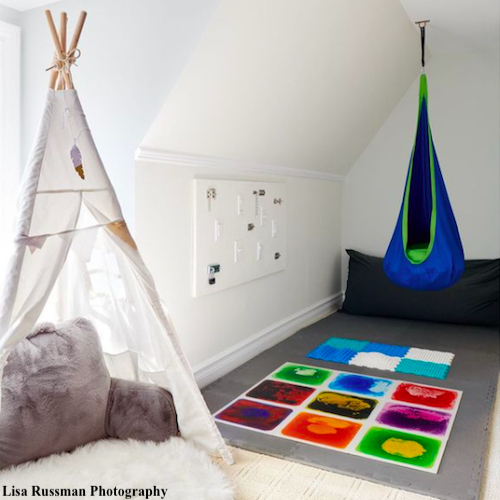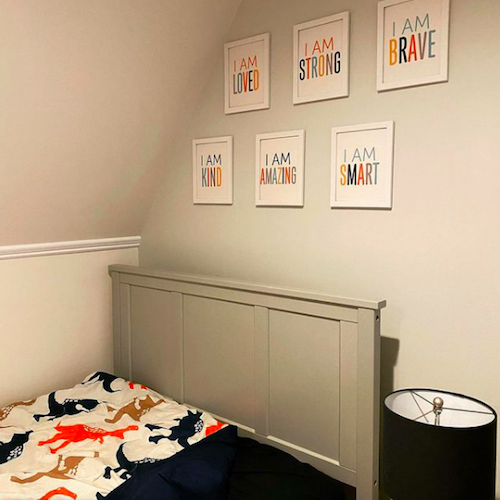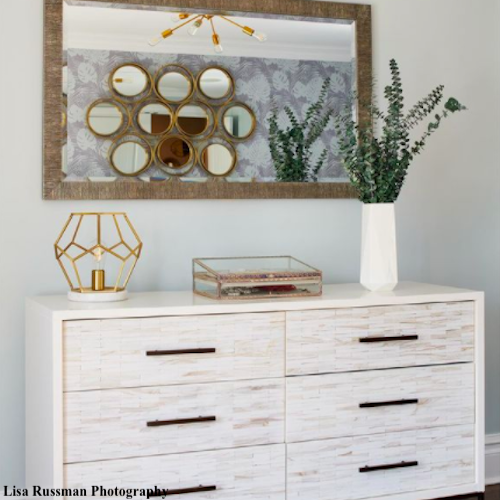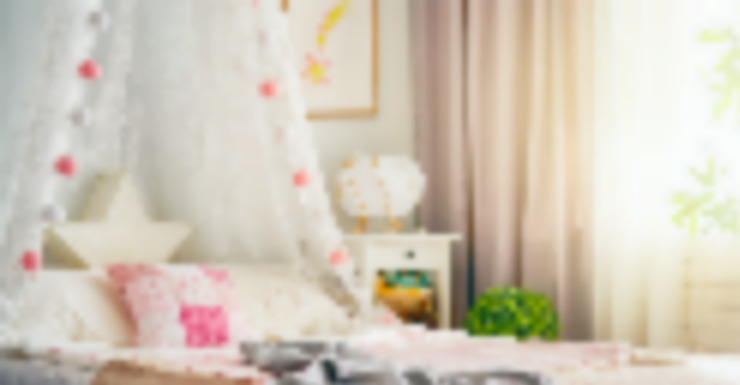It’s been a year. During the past year, you’ve spent much more time at home than you ever dreamed, juggling kids, work, school and likely feelings of anxiety from kids and adults. While there are certain contributing factors beyond your control, creating a home design that creates calm versus chaos is definitely doable. “The number one thing you can do is declutter the house, which reduces anxiety,” says Beatrice Tokayer, owner of BRT Interior Design, which specializes in home design and sensory design for kids with special needs. “If spaces are messy and full of toys, it can stimulate anxiety.” Once you’ve decluttered, prioritize your main living spaces to make beautiful and functional design choices that will benefit the whole family.
 Create a “Just For Them” Space
Create a “Just For Them” Space
“Because of this past year, kids need an area where they can go wild,” says Tokayer. If possible, find an area of your home designated for kids, where they can jump and exert energy. Tokayer suggests creating a sort of sensory gym, with a trampoline (any size will do), has a number of benefits including stimulating the vestibular system, which controls our balance and spatial orientation, improving coordination and motor skills, and relieving stress. “Create a space where they can jump, climb, do art and more, and teach them that this is their space so you can invest in nicer furniture for the rest of the house,” says Tokayer. Chalkboard wallpaper allows kids the opportunity to be creative and adventurous by ‘drawing on the wall.’
 Choose Color Correctly
Choose Color Correctly
Sometimes, beautiful colors that are used in homes can actually stimulate anxiety. “Lighter colors for a bedroom are soothing and promote better quality of sleep,” says Tokayer. “A lot of homes have bright colors and busy wallpaper, which can overstimulate kids.” Soothing colors include mint greens, light blues, greys and creams. “You want to promote a positive feeling throughout the house.” This is particularly useful for sensory seeking kids, as certain colors or busy designs in a bedroom may look nice, but can actually be a trigger. One space in which bright colors can work well is the “just for them” space.
Add Soft Lighting
Consider warm lighting in the bedroom that can be dimmed, verses recessed lighting which is brighter and less soothing. String lights are also a good options for kids’ bedrooms, particularly as many kids are afraid of the dark, which can cause anxiety. “Use as much natural sunlight in the home as possible,” says Tokayer. Use window treatments which are see through and bring in sunlight, when possible.
 Incorporate décor with benefits
Incorporate décor with benefits
Keep décor throughout the home and in spaces the kids inhabit often simple. Add a diffuser with lavender oil, which promotes relaxation. Keep the patterns of the décor simple, and stick to lighter colors on decorative pillows and other pieces. Tokayer advises parents of special needs kids take it slow when adding new art work. “Special needs children have trouble with transitions, and often don’t like things hung on the wall,” she says. “Introduce new décor slowly and one at a time.”
Adding plants to various areas of the home including the living room and bedrooms will also help reduce stress and brings nature into the home. “I have a eucalyptus plant in my bedroom, which smells good and provides a natural feeling,” says Tokayer. Eucalyptus plants are known to help relaxation and calm your stress response system.
Most importantly, know each family member’s needs, and make things as easy for you as possible. “Sometimes you have to think outside the box,” says Tokayer. “I added jungle-themed wallpaper to one of my son’s closets which brought in green, nature and the feeling of outdoors. My other sensory seeking son needs compression and small spaces, so I added a teepee to his room.” Addressing the needs of each child within their own space can help relieve anxiety and create a happy home for everyone.







![Make Your Outdoor Dreams Come True at Down to Earth Living [dedicated]](/images/jcogs_img/cache/Down_to_Earth_Living_Outdoor_Furniture_main_-_28de80_-_e3a55d6f064baca230ee75c651d848d669f163f1_lqip.png)